review HTC’s One V is the little brother of its flagship One series. Sporting a smaller profile and less powerful innards than its more powerful siblings, but with a design reminiscent of the company’s previous Legend handset, is this one smartphone which can become popular in its own right? Read on to find out.
Design
The One V is the most unassuming handset in HTC’s One series. With a 3.7″ touchscreen (compared with the 4.7″ of the One X/XL), it easily fits in one hand and feels OK there. The front of the device is mainly taken up with that screen, with a small HTC logo on top and the company’s normal three capacitive Android buttons (back, home and windows) buttons beneath it. There’s a small lip beneath these buttons which makes the One V a little easier to hold in the hand, very much like the HTC Legend which was popular in Australia through Vodafone several years ago.
The back of the One V is clothed in a grey material which feels like a mix between plastic and aluminium — light, but fairly cheap-feeling. There’s a nicer feeling matte plastic layer at the bottom and top of the back cover. On the back bottom there’s a small speaker grill, while at the top in the normal spot sits the camera and flash.
On the left-hand side of the One V sits its micro-USB charging and PC connection port, while on the right is a volume rocker. On top is the 3.5mm headphone jack and a small on/off button.
In general, the One V is about as minimalistic as a smartphone can get. There’s very little here in the way of standout design, and it’s not a particularly comfortable phone to hold in the hand, but it’s not uncomfortable either. It’s a moderately good design with absolutely no bells and whistles.
Features
The One V is the lowest-end model in HTC’s One series, which it has been progressively been launching in Australia over the past few months, and consequently features lesser features than the rest of the series. It uses a 3.7″ Super LCD 2 screen, a 1GHz processor, a five megapixel camera with auto-focus and smart LED flash, total storage space of 4GB and 512MB of RAM, and a battery with a capacity of 1500mAh.
Like the other models in the One series, it runs Android 4.0 (the next to latest version of Google’s Android platform, dubbed ‘Ice Cream Sandwich’), and its camera allows 720p HD video recording. The phone is light — at 115g — and it comes with the Beats Audio technology integrated that HTC has licensed for other smartphones in the One range. We couldn’t see a front-facing camera on the unit, so no video calling.
To be honest, these features are quite mediocre for mid-2012. Five megapixels isn’t fantastic for a camera when you can easily get eight. 1GHz for a CPU isn’t great when you can get a quad-core 1.4GHz model for not much more. 3.7″ is small in 2012 for a touchscreen. And the list goes on. But that’s what you expect from a mid-range smartphone — the One V isn’t trying to be the highest-specced smartphone around. It’s trying to provide a lower-priced alternative for those who don’t want to pay top dollar.
Our One V model came with some custom Optus applications bundled in, but they weren’t quite unobtrusive and didn’t interfere much with the stock Android experience, thankfully — unlike Telstra, which tends to make a point of pushing its software in users’ faces.
Performance
The first thing which you’ll notice about the One V is that the screen feels cramped, especially if you’ve used any other smartphones with a larger screen size recently. After using HTC’s One X/XL series, Samsung’s Galaxy S III and Huawei’s Ascend P1 over the past few weeks, the One V’s much smaller screen feels fidgety to use and the fonts appear quite small.
Of course, the easiest argument against this opinion is the fact that the iPhone 4S‘ screen size is virtually the same as the One V; and if millions of Australians are using that model with no problem, why would the One V feel small?
Our argument here is that the iPhone 4S has started to feel cramped as well. A 3.7″ screen size does fit nicely in the hand, but with mobile phones increasingly being used for web browsing, email and video games rather than primarily for making calls and sending text messages (they’re primarily Internet access devices, not telephones), in our opinion this size is too small. 4.3″ is a nice minimum in mid-2012, and we’d like to see something similar from the next iPhone.
Many of the other features of the One V are also a bit less than ideal, to our taste. General usage performance of the phone is quite good — it’s speedy enough to handle most smartphone tasks and load most applications easily — but there was the occasional jaggy bit while something lagged; the One V’s user interface is not as silky smooth as a powerhouse like the One X/XL or Galaxy S III, and it’s also not up to the mark set by Huawei’s speedy Ascend P1.
However, we would say the One V performs about on par with other mid-range models such as Sony’s Xperia Sola, and certainly HTC’s polished Sense interface on top of Android is a step ahead of the mid-range competition. Hell, many mid-range smartphones in 2012 don’t even run Ice Cream Sandwich yet, which the One V does.
The One V’s camera, while featuring a lesser rating, was surprisingly good, and we took some pretty quality shots with it. Again, it’s not stellar, but it’s more than usable, and you likely won’t bother carrying around a separate camera if you have this phone.
One aspect of the One V’s performance which we want to praise is the phone’s battery life. We found the One V’s battery life quite hard to exhaust, and it seemed to last longer than its juice-sucking big brother, the One XL, which has a 4G chip and large screen which just chunks through its battery quite speedily.
The One V isn’t quite up to iPhone 4S levels, but we did leave it on a desk at home for the majority of a week, only to come back and find it quite functional (which we can’t say for the One XL), and it also survived web browsing and multimedia use pretty well. It also charged very quickly. You can find a complete analysis of the One V’s battery life at GSMArena, which in April rated it as one of the best smartphones around in terms of battery life for talking and web browsing, although it didn’t perform as well for video playback.
Conclusion
Are you a high-end user who demands a great deal of performance and usage from your consumer electronics and is willing to pay for it? If so, don’t buy the One V; it’s got mid-range specifications and performance that aren’t up to date for mid-2012 and will quickly leave you wanting more — more screen size, more processing power, more memory and so on.
Even those on a budget will likely find better options out there, such as the Huawei Ascend P1, which is only a couple of hundred dollars more expensive than the One V, but delivers performance almost on par with the highest-end smartphones in the market.
However, if you are a mid-range user who wants to dabble in the smartphone world without living in it constantly, or if you really want to spend only a few hundred dollars on a smartphone, then, like the Sony Xperia Sola, the One V is a very solid option in its class. You’ll get most of the features you want and with Sense and Ice Cream Sandwich, you’ll feel like you’ve joined the modern Android revolution. This is a solid smartphone with decent build quality, good battery life and up to date software. Everything HTC does is pretty good quality at the moment, and so is the One V. I think in its mid-range class it would probably be pretty hard for rival models to better it.
Other reviews of the One V which we liked: Engadget, The Verge. The One V is available through Optus or unlocked through independent retailer Mobicity.
Image credit: HTC

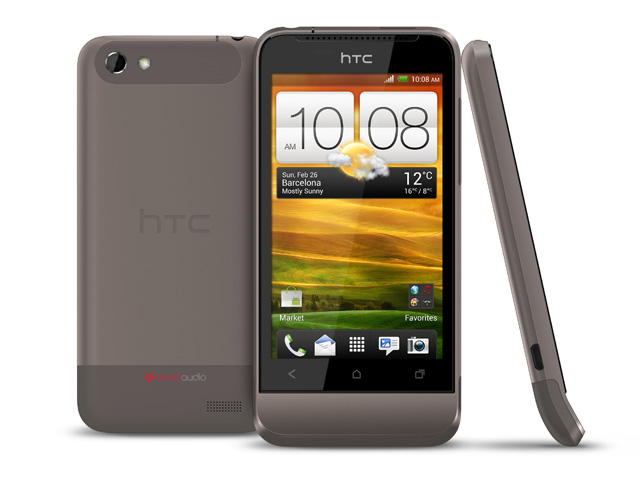
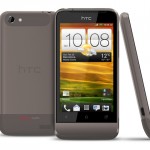
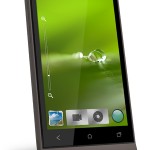
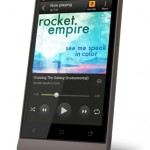
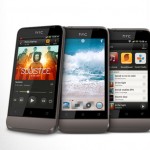
Nice review. One question: What was it about the handset that made it feel uncomfortable? At the time were you using it as a phone, browsing etc?
I’m finally going to upgrade this old stinker and move in to the smartphone world (though one could argue that any phone could be considered smart against what I have).
I’ll take a peek at phones like this in the midrange but I’d prefer something that’s going to have some longevity. Maybe a GS3 but that’s doing the cannonball instead of just dipping the toe…
Any tips for a first time smartphone buyer?
I think Renai was meaning it feels a little cramped when browsing the web (as he said, smartphones are being used more for browsing the web than actually calling people nowadays), but size preference is purely subjective (any touchscreen smartphone’s display will feel massive compared to the Nokia you have).
Best advice I could give would be to go into a shop and try out as many different phones as you can.
Get a feel for what size you like, as there’s a big variation in phone and screen sizes around at the moment.
There’s also some very good deals on phones that have been around for a while (i.e. Galaxy Nexus, iPhone 4, Galaxy S2, HTC Sensation amongst others), as tech-heads get bored easily and are always wanting to be on the bleeding edge.
“I think Renai was meaning it feels a little cramped when browsing the web (as he said, smartphones are being used more for browsing the web than actually calling people nowadays), but size preference is purely subjective (any touchscreen smartphone’s display will feel massive compared to the Nokia you have).
Best advice I could give would be to go into a shop and try out as many different phones as you can.
Get a feel for what size you like, as there’s a big variation in phone and screen sizes around at the moment.”
Excellent advice — check out the models, find one you like physically and then read reviews online to get more detail.
“What was it about the handset that made it feel uncomfortable”
I don’t really like the material the back casing is made out of — it feels grainy and a little cheap, and I think it would be a little slippery in many people’s hands. In addition, as mentioned, I didn’t like the touchscreen as I felt it was a little small and cramped. As a phone this model would be absolutely fine — I’m mainly talking about smartphone features here like web browsing, email, social networking etc.
If you’re shifting to a smartphone for the first time, I recommend you hold off for a few months and wait for the new Apple iPhone (should be out in a couple of months in Australia, going by previous years). Otherwise, Samsung’s Galaxy S III or the HTC One X or S models would be my pick. The XL probably will chunk through battery life too quickly for you to be happy with it if you’re coming from a non-smartphone. Huawei’s Ascend P1 is a good low cost alternative which doesn’t sacrifice much on speed.
Happy hunting! :)
Mike – I can out do you. The One V replaced a Nokia 3315 that I bought outright for $160 in 2003. The Nokia gets better reception than my wife’s iPhone 5.
The One V is correctly attractive to laggards who are after up to date (eg. Android 4) but are price sensitive and not ready for a steroidal smartphone.
Handy tip: Procedure to access “legacy” (non-ICS) apps
https://groups.google.com/forum/?fromgroups=#!topic/newsrob/C1kztAbSff4
Thanks James and Renai for the info.
Definitely not planning on buying until the iPhone 5 is out. I’d expect that to change the pricing landscape quite a fair bit.
I’m one of those IT types that just waits, and waits… and waits. A little more waiting won’t hurt.
heh if you haven’t gotten a smartphone yet, then I’m sure a few more months won’t hurt ;)
Comments are closed.